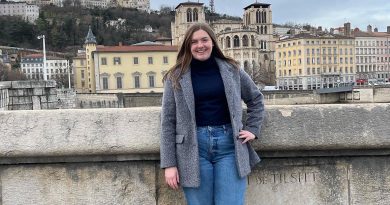Angelo Piro: Vienna, Austria
By Angelo Piro
Staff Writer
In the past few weeks, my travels through the region have taken me to Rome, Zagreb, the capital of Croatia, and through Montenegro. However, a trip during a long weekend earlier last month possibly had the most effect on me. After travelling half a day by bus and getting thoroughly lost, I finally arrived in Vienna, Austria. What I found there was not at all what I expected.
Most people who find themselves in Vienna typically stand in wonder of the amazing architecture, fawning over art museums, or enjoying a nice Viennese coffee or wiener-schnitzel. In addition to this, I myself appreciated the collision of old- and new-world diplomacy. The presence of an older diplomacy is quite easy to see in this city. Every block seems to contain some magnificent building that heralds back to the Renaissance, or housed this or that famous person, or witnessed a turning point in history. Vienna, especially, was the site of many important events and persons in old-world diplomacy.
In the center of Vienna, I wandered through the palaces of the Hapsburg family, one of the most influential and enduring royal dynasties that ruled the Austrian Empire, Spain, the Netherlands and even Napoleonic Mexico. While I wandered through their halls, admiring treasures that included everything from priceless paintings and crowns to an ancestral unicorn horn, I began to piece together the massive undertaking that was their foreign policy. The intricate policies and structures of diplomacy of that time astounded me. These few elites, with careful and educated planning and advice, managed to control the fate of the Western world and its dependents successfully. It was only with the rise and fall of Napoleon that the Hapsburgs began to waver in the chaos that followed him.
But Napoleon did not end Viennese preeminence in foreign affairs. In the various palaces and imperial administrative buildings, the Congress of Vienna unfolded as the first major international diplomatic conference. Walking where, two hundred years ago, diplomats had decided on a structure of international relations that would generally remain in place to this day is an impressive experience for someone studying these modern interactions.
Vienna did not limit itself to showing only the sort of diplomacy we might read in a history book and forget. It still stands as a major hub of modern, new-world diplomacy. As I explored the city, I found myself in the office of the headquarters for the Organization for Security and Cooperation in Europe, an emergent voice in European security and democracy. As I wandered the city, I managed to tour the building and sit in on a meeting of a small group of assembled delegates on the situation in Ukraine. While reading and thinking about the diplomacy of the past was surreal, witnessing it happen in front of me was on another level.
All in all, the trip was amazing. Not only was I able to see all the major sites of the city, but I also experienced the past and witnessed the future of European diplomacy. Seeing the interactions and similarities between old and new-world diplomacy in this amazing city certainly puts a new perspective on my studies at the Dubrovnik International University and at Seton Hall.

